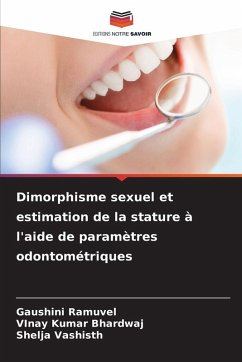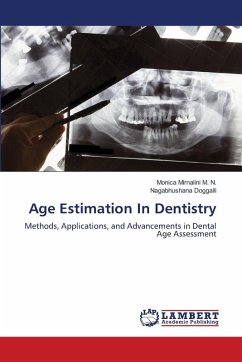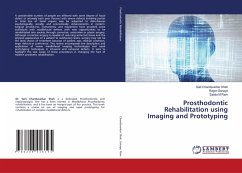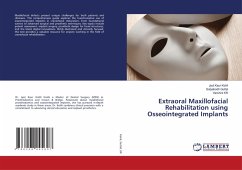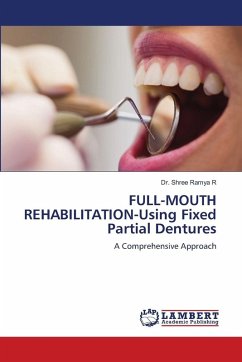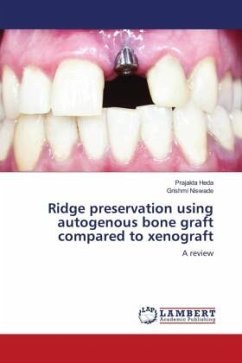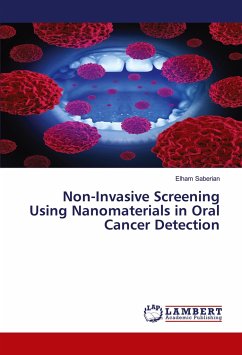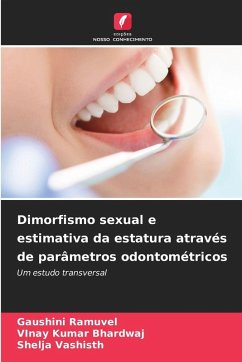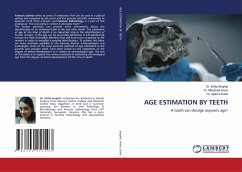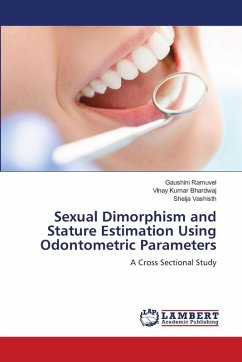
Sexual Dimorphism and Stature Estimation Using Odontometric Parameters
A Cross Sectional Study
Versandkostenfrei!
Versandfertig in 6-10 Tagen
29,99 €
inkl. MwSt.

PAYBACK Punkte
15 °P sammeln!
Odontometric parameters are valuable tools in forensic anthropology due to their durability and resistance to postmortem changes. This study aimed to evaluate sexual dimorphism and estimate stature using dental measurements in individuals aged 18-35 years. Conducted at a tertiary dental hospital in Himachal Pradesh, the cross-sectional study included 180 participants (90 males, 90 females). Measurements such as mesiodistal widths of canines, intercanine width, interpremolar width, and combined anterior width were taken using digital vernier calipers on dental casts. Stature was measured using ...
Odontometric parameters are valuable tools in forensic anthropology due to their durability and resistance to postmortem changes. This study aimed to evaluate sexual dimorphism and estimate stature using dental measurements in individuals aged 18-35 years. Conducted at a tertiary dental hospital in Himachal Pradesh, the cross-sectional study included 180 participants (90 males, 90 females). Measurements such as mesiodistal widths of canines, intercanine width, interpremolar width, and combined anterior width were taken using digital vernier calipers on dental casts. Stature was measured using an anthropometer. Statistical analysis was performed using SPSS v26. The results showed significant sexual dimorphism in mandibular canine dimensions and intercanine widths. The right maxillary canine showed the highest accuracy in sex prediction, while maxillary intercanine width had the strongest correlation with stature. These findings suggest that odontometric parameters, particularly intercanine and interpremolar widths, can be effective in forensic identification when skeletal remains are incomplete or unavailable.



